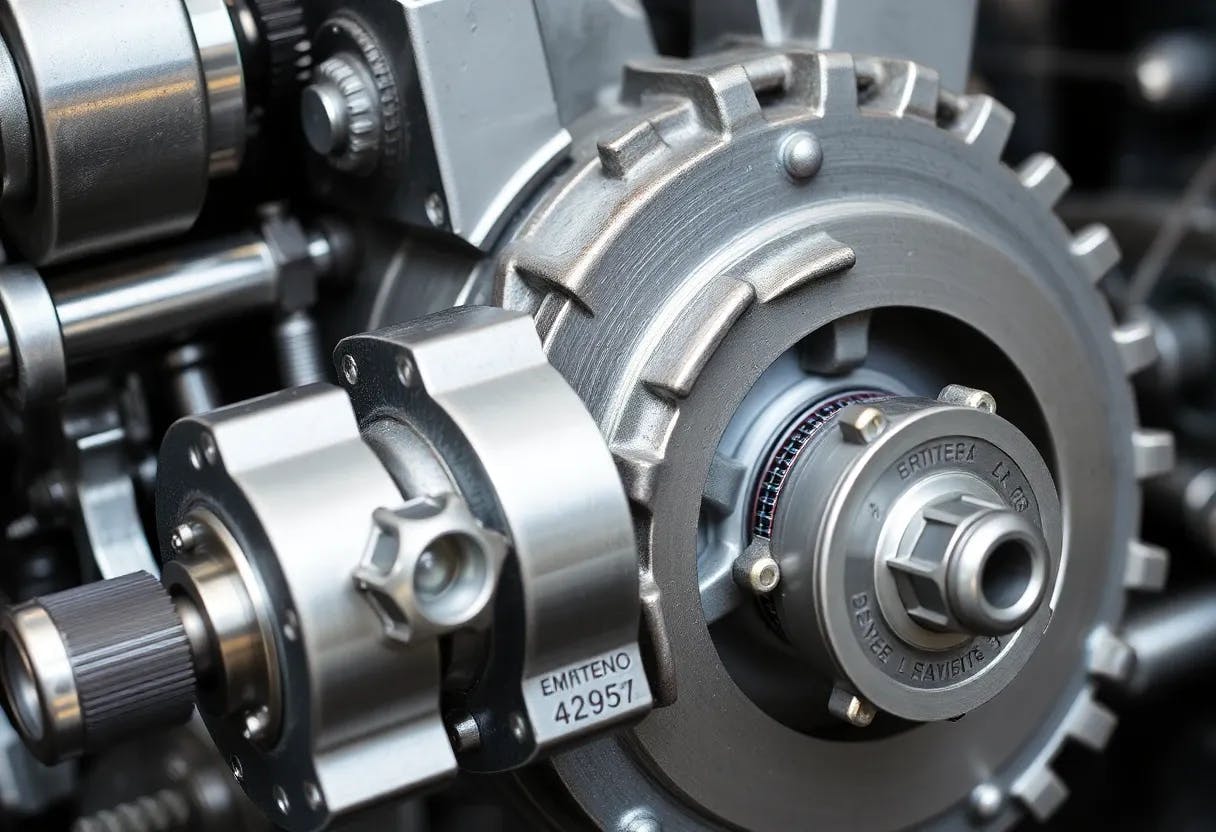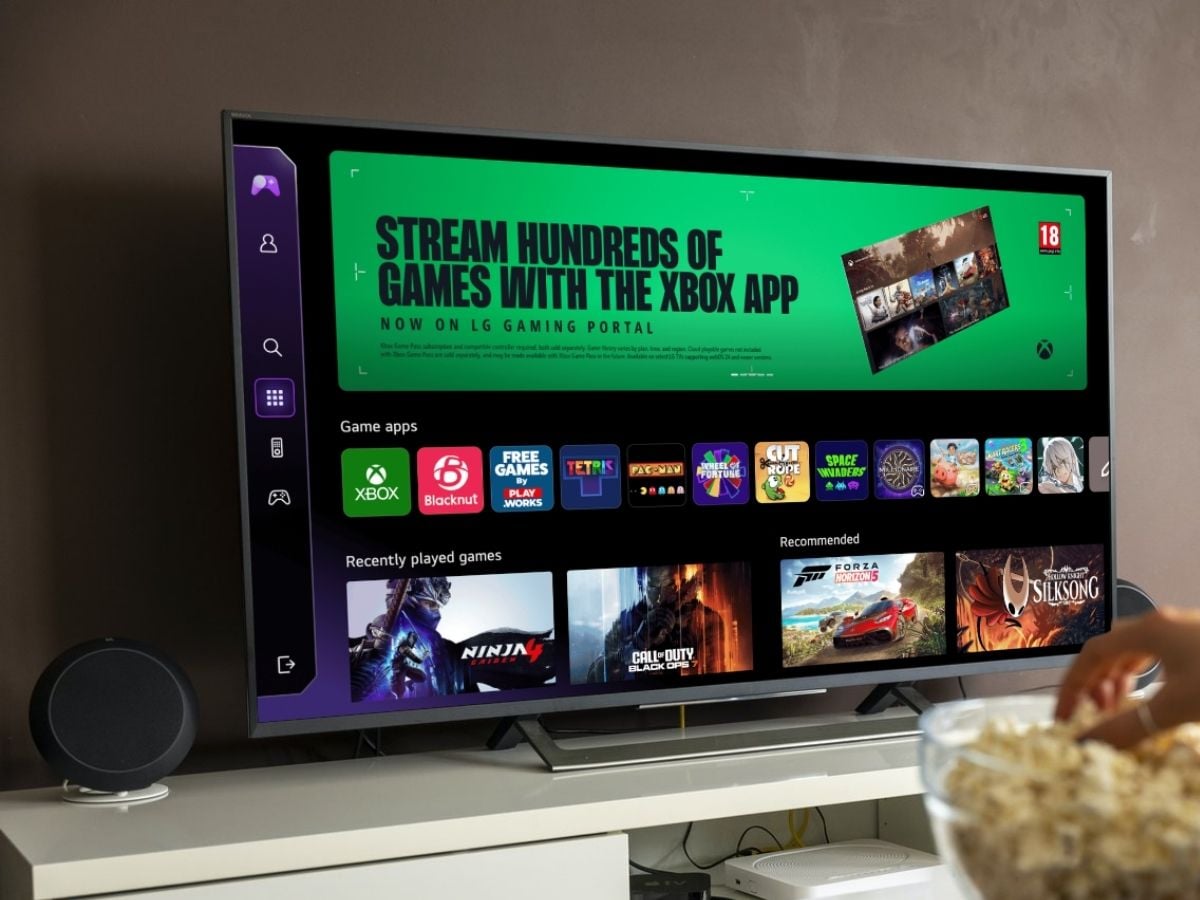In 2025, typing “best way to cancel a flight on X airline” into a browser rarely gives you just ten blue links anymore. You get:
- a one‑sentence summary,
- a step‑by‑step list,
- maybe even a “people also asked” carousel that weirdly reads your mind.
Under the hood, that’s not “just a better search algorithm.” It’s a stack of question–answering (QA) systems: some reason over structured knowledge graphs, some run deep neural networks over raw web pages, and many glue the two together.
This piece breaks down how that stack actually works, based on a production‑grade design similar to QQ Browser’s intelligent Q&A system.
We’ll walk through:
- Where QA shows up in real products
- The two core paradigms: KBQA and DeepQA + MRC
- How a knowledge‑graph Q&A system is wired
- How search‑based DeepQA handles noisy web data
- How long‑answer tasks and opinions are modeled
- A practical blueprint if you’re building your own stack
Grab a ☕ — this is more systems‑design deep dive than shiny demo.
1. Where QA Actually Lives in Products
From a user’s point of view, QA shows up in lots of different skins:
- Natural‑language search – “Why is my phone battery draining overnight?” instead of
phone battery drain overnight fix. - Smart snippets – a short answer paragraph pinned at the top of results, often with a source link.
- Virtual assistants – Siri/Google Assistant/Alexa responding to “What’s traffic like on the way to work?” or “Remind me in 30 minutes.”
- Knowledge panels – right‑hand “cards” summarizing a person, company, movie, or recipe.
- Domain search – internal tools for docs, legal case retrieval, medical guidelines, etc.
- Smart customer support – bots that answer 80% of “where is my order”‑style questions before a human sees the ticket.
- Ed‑tech Q&A – “explain this theorem”, “walk me through this derivation step by step.”
The core task is always the same:
Take a natural‑language question → understand intent + constraints → use knowledge → return an answer (not just a list of URLs).
The differences are in what knowledge you rely on and how structured that knowledge is. That’s where the split between KBQA and DeepQA comes from.
2. Two Brains in One Search Engine: KBQA vs DeepQA
Most modern search Q&A systems run both of these in parallel:
2.1 KBQA – Question Answering over Knowledge Graphs
Think of KBQA as your in‑house database nerd.
- Data lives as triples:
(head_entity, relation, tail_value)e.g.(Paris, capital_of, France)or(iPhone 15, release_date, 2023-09-22). - The graph is curated, structured, and schema‑driven: entities, types, attributes, relations.
- A KBQA system:
-
Parses the question into a logical form – which entities, which relations?
-
Translates that into graph queries (triple lookups, path queries).
-
Runs them on the knowledge graph (via indices or a graph DB).
-
Post‑processes and verbalizes the result.
It’s perfect for hard factual questions:
- “What is the half‑life of Iodine‑131?”
- “Who directed the movie Dune (2021)?”
- “How many employees does Company X have?”
If the fact is in the graph and your semantic parser doesn’t mess up, it’s fast and precise.
2.2 DeepQA – Search + Machine Reading Comprehension
DeepQA is the chaotic genius that thrives on unstructured data:
- It works over web pages, docs, PDFs, UGC, forums, and FAQs.
- Pipeline (in a very simplified view):
-
Use a search index to retrieve top‑N passages/pages.
-
Feed them (plus the question) into a Machine Reading Comprehension (MRC) model.
-
The model either extracts a span (short answer) or generates a natural sentence/paragraph.
-
Score and calibrate confidence, then ship the best answer to the user.
Historically, this looked like IBM Watson: dozens of hand‑engineered features and brittle pipelines. Modern systems are closer to DrQA → BERT‑style readers → generative FiD‑style models, with much of the manual feature engineering replaced by deep models.
DeepQA is what you rely on when:
- The answer is buried in prose (“Explain why my dog’s vaccination schedule changed this year”).
- The answer involves opinions, arguments, pros/cons (“Is intermittent fasting safe?”).
- The knowledge graph simply doesn’t encode the nuance you need.
The magic in production is not choosing one or the other, but blending them.
3. System‑Level Architecture: Offline vs Online Brain
A typical search QA stack is split into offline and online components.
Offline: Building and Understanding Knowledge
- Crawling & ingestion of web pages, docs, UGC, PGC.
- Quality and authority analysis – demoting spam, SEO junk, low‑trust sources.
- FAQ / QA pair mining – extracting question–answer pairs from forums, help centers, etc.
- Knowledge graph construction – entity extraction, linking, relation extraction, ontology maintenance.
- Pre‑training MRC & generative models on logs, QA pairs, and task‑specific objectives.
This is where you burn GPU hours and run large batch jobs. Latency doesn’t matter; coverage and robustness do.
Online: Answering in ~100ms
When a query hits the system:
- Query understanding: classification (is this QA‑intent?), domain detection, entity detection.
- Multi‑channel retrieval:
- KG candidate entities/relations.
- Web passages for DeepQA.
- High‑quality QA pairs (FAQs/community answers).
- Per‑channel answering:
- KBQA query execution and reasoning.
- Short‑ or long‑answer MRC.
- Fusion & decision:
-
Compare candidates: score by relevance, trust, freshness, and presentation quality.
-
Decide: graph card? snippet? long answer? multiple options?
That fusion layer is effectively a meta‑ranker over answers, not just documents.
4. KBQA: How Knowledge‑Graph Q&A Actually Works
Let’s zoom in on the structured side.
4.1 Data Update Pipelines
Real‑world knowledge graphs are never static. Updates usually run in three modes:
- Automatic updates
- Web crawlers, APIs, database feeds.
- Good for high‑volume, low‑risk attributes (e.g., stock prices, product availability).
- Semi‑automatic updates
- Models extract candidate facts, humans review/correct/approve.
- Used for sensitive or ambiguous facts (health, legal, financial).
- Manual curation
-
Domain experts edit entities and relations by hand.
-
Critical for niche domains (e.g., TCM herbs, specific legal regulations).
A production KG typically combines all three.
4.2 Two Retrieval Styles: Triples vs Graph DB
You’ll see two dominant patterns.
Direct triple index
-
Store triples in inverted indices keyed by
entity,relation, sometimesvalue. -
Great for simple, local queries:
-
single hop (“capital of X”)
-
attribute lookup (“height of Mount Everest”).
Fast, cacheable, simple.
Graph database
- Load the graph into a proper graph DB (Neo4j, JanusGraph, or in‑house).
- Query with something like Cypher / Gremlin / SPARQL‑ish languages.
- Needed for multi‑hop reasoning and graph analytics:
- “Which movies were directed by someone who also acted in them?”
- “Find companies within 2 hops of this investor via board memberships.”
The system often does a cheap triple lookup first, then escalates to deeper graph queries only when necessary.
4.3 Semantic Parsing Pipeline
Semantic parsing is the KBQA piece that feels most like compiler construction. The pipeline roughly looks like this:
- Domain classification
- Route “Write a seven‑character quatrain” to a Chinese poetry handler.
- Route “Who is the mayor of Paris?” to a single‑entity handler.
- Route “Which movies did Nolan direct after 2010?” to a multi‑entity/constraint handler.
- Syntactic/dependency parsing
- Build a parse tree to figure out subjects, predicates, objects, modifiers, and constraints.
- Logical form construction
-
Convert into something like a lambda‑calculus / SQL / SPARQL‑like intermediate form.
-
E.g.
Q: Which cities in Germany have population > 1 million? → Entity type: City → Filter: located_in == Germany AND population > 1_000_000
- Graph querying & composition
-
Execute logical form against the graph.
-
Recursively stitch partial results (multi‑step joins).
-
Rank, dedupe, and verbalize.
This rule‑heavy approach has a huge upside: when it applies, it’s insanely accurate and interpretable. The downside is obvious: writing and maintaining rules for messy real‑world language is painful.
4.4 Neural KBQA: Deep Learning in the Loop
Modern systems don’t rely only on hand‑crafted semantic rules. They add deep models to:
-
Detect entities even with typos/aliases/code‑mixed text.
-
Map natural‑language relation phrases (“who founded”, “created by”, “designed”) to schema relations.
-
Score candidate logical forms or graph paths by semantic similarity instead of exact string match.
The result is a hybrid: deterministic logical execution + neural models for fuzzier pattern matching.
5. DeepQA: Search + Machine Reading Comprehension in the Wild
On the unstructured side, things get noisy fast.
5.1 From IBM Watson to DrQA and Beyond
Early DeepQA stacks (hello, Watson) had:
-
separate modules for question analysis, passage retrieval, candidate generation, feature extraction, scoring, reranking…
-
tons of feature engineering and fragile dependencies.
The modern “open‑domain QA over the web” recipe is leaner:
-
Use a search index to fetch top‑N passages.
-
Encode question + passage with a deep model (BERT‑like or better).
-
Predict answer spans or generate text (MRC).
-
Aggregate over documents.
DrQA was a landmark design: retriever + reader, trained on datasets like SQuAD. That template still underlies many production stacks today.
5.2 Short‑Answer MRC: Extractive Readers
Short‑answer MRC means:
Given a question + multiple documents, extract a single contiguous span that answers the question, and provide the supporting context.
Think “What is the capital of France?” or “How many bits are in an IPv4 address?”
A typical architecture:
-
Encode each of the top‑N passages plus the question.
-
For each passage, predict:
-
Is there an answer here? (answerability)
-
Start/end token positions for the span.
-
Then pick the best span across documents (and maybe show top‑k).
Challenge 1: Noisy search results
Top‑N search hits include:
- irrelevant content,
- duplicate or conflicting answers,
- clickbait.
A clean trick is joint training of:
- an answer existence classifier per passage, and
- a span extraction head,
So, the model learns to say “there is no answer here” and suppresses bad passages rather than being forced to hallucinate a span from every document. Multi‑document interaction layers then allow the model to compare evidence across pages, rather than treating each in isolation.
Challenge 2: Commonsense‑dumb spans
Purely neural extractors sometimes output “valid text that’s obviously wrong”:
- boundary off by a few tokens,
- wrong type (“yes” instead of a date),
- or nonsense phrases.
A proven fix is to inject external knowledge:
- Mark entities in passages using entity linking to Wikipedia/KG.
- Give the model special embeddings for “this looks like a date/person/location/numeric measure”.
- During training, nudge the model to pay extra attention to spans with the correct type.
This improves both precision and “commonsense sanity.”
Challenge 3: Robustness & R‑Drop
Dropout is great for regularization, terrible for consistent outputs: tiny changes can flip the predicted span.
One neat trick from production stacks: R‑Drop.
-
Apply dropout twice to the same input through the model.
-
Force the two predicted distributions to be similar via symmetric KL‑divergence.
-
Add that term as a regularizer during training.
This pushes the model toward stable predictions under stochastic noise, which is crucial when users reload the same query and expect the same answer. Combined with data augmentation on semantically equivalent queries (different phrasings pointing to the same passage), this significantly boosts robustness.
Challenge 4: Answer normalization & multi‑span answers
Reality is messier than SQuAD:
-
Different docs phrase the same fact differently: “3–5 years”, “three to five years”, “around five years depending on…”.
Extractive models struggle with this. A common upgrade is to move to generative readers, e.g., Fusion‑in‑Decoder (FiD):
-
Encode each retrieved document separately.
-
Concatenate encodings into the decoder, which generates a normalized answer (“3–5 years” or “Xi Shi and Wang Zhaojun”).
-
Optionally highlight supporting evidence.
Two extra details from real systems:
- Use click logs to synthesize massive weak‑supervision data (query → clicked doc → pseudo answers).
- Train a dedicated confidence model on top of generated answers, because raw language‑model scores (perplexity) are terrible as calibrated confidence.
5.3 Long‑Answer MRC: Summaries, Not Just Spans
Short answers are great, until the question is:
- “How does R‑Drop actually improve model robustness?”
- “Compare KBQA and DeepQA in terms of scalability and coverage.”
You don’t want “Because it reduces KL‑divergence.” You want a paragraph‑level explanation.
So long‑answer MRC is defined as:
Given question + docs, select or generate one or more longer passages that collectively answer the question, including necessary background.
Two flavors show up in practice.
5.3.1 Compositional (Extractive) Long Answers
Here, the system:
- Splits a document into sentences/segments.
- Uses a BERT‑like model to score each segment as “part of the answer” or not.
- Picks a set of segments to form a composite summary.
Two clever tricks:
-
HTML‑aware inputs
-
Certain tags (
<h1>,<h2>,<li>, etc.) correlate with important content. -
Encode those as special tokens in the input sequence so the model can exploit page structure.
-
Structure‑aware pretraining
-
Task 1: Question Selection (QS) – randomly replace the question with an irrelevant one and predict if it’s coherent.
-
Task 2: Node Selection (NS) – randomly drop/shuffle sentences or structural tokens and train the model to detect that.
-
Both push the model to understand long‑range document structure rather than just local token patterns.
This delivers “best of both worlds”: extractive (so you can highlight exact sources) but capable of stitching together multiple non‑contiguous bits.
5.3.2 Opinion & Judgement QA: Answer + Rationale
Sometimes the user asks a judgment question:
- “Is it okay to keep a rabbit in a cage?”
- “Should I disable automatic updates on my phone?”
A pure span extractor can’t safely output just “yes” or “no” from arbitrary web text. Instead, some production systems do:
- Evidence extraction (long answer):
- Same as compositional QA: select sentences that collectively respond to the question.
- Stance/classification (short answer):
-
Feed
question + title + top evidence sentenceinto a classifier. -
Predict label:
support / oppose / mixed / irrelevantoryes / no / depends.
The final UX:
- A concise verdict (“In most cases, keeping a rabbit in a small cage is not recommended.”).
- Plus, the evidence passages users can read and judge for themselves.
That “show your work” property is crucial when answers may influence health, safety, or money.
6. A Minimal QA Stack in Code (Toy Example)
To make this less abstract, here’s a deliberately simplified Python‑style sketch of a search + MRC pipeline. This is not production‑ready, but it shows how the pieces line up:
from typing import List
from my_search_engine import search_passages # your BM25 / dense retriever
from my_models import ShortAnswerReader, LongAnswerReader, KgClient
short_reader = ShortAnswerReader.load("short-answer-mrc")
long_reader = LongAnswerReader.load("long-answer-mrc")
kg = KgClient("bolt://kg-server:7687")
def answer_question(query: str) -> dict:
# 1. Try KBQA first for clean factoid questions
kg_candidates = kg.query(query) # internally uses semantic parsing + graph queries
if kg_candidates and kg_candidates[0].confidence > 0.8:
return {
"channel": "kbqa",
"short_answer": kg_candidates[0].text,
"evidence": kg_candidates[0].path,
}
# 2. Fallback to DeepQA over the web index
passages = search_passages(query, top_k=12)
# 3. Short answer try
short = short_reader.predict(query=query, passages=passages)
if short.confidence > 0.75 and len(short.text) < 64:
return {
"channel": "deepqa_short",
"short_answer": short.text,
"evidence": short.supporting_passages,
}
# 4. Otherwise go for a long, explanatory answer
long = long_reader.predict(query=query, passages=passages)
return {
"channel": "deepqa_long",
"short_answer": long.summary[:120] + "...",
"long_answer": long.summary,
"evidence": long.selected_passages,
}
Real systems add dozens of extra components (logging, safety filters, multilingual handling, feedback loops), but the control flow is surprisingly similar.
7. Design Notes If You’re Building This for Real
If you’re designing a search QA system in 2025+, a few pragmatic lessons from production stacks are worth keeping in mind:
- Invest in offline data quality first. A mediocre model plus clean data beats a fancy model on garbage.
- Treat QA as multi‑channel from day one. Don’t hard‑wire yourself into “only KG” or “only MRC.” Assume you’ll need both.
- Calibrate confidence explicitly. Don’t trust raw model logits or LM perplexity. Train separate calibration/rejection heads.
- Log everything and mine it. Query logs, click logs, and dissatisfaction signals (“people also ask”, reformulations) are your best supervision source.
- Plan for long answers and opinions. Short answers are the demo; long, nuanced replies are the reality in most domains.
- Expose evidence in the UI. Let users see why you answered something, especially in health, finance, and legal searches.
- Keep an eye on LLMs, but don’t throw away retrieval. LLMs with RAG are amazing, but in many settings, you still want:
- KG for hard constraints, business rules, and compliance.
- MRC and logs to ground generative answers in actual content.
8. Closing Thoughts
Modern search Q&A is what happens when we stop treating “search results” as the product and start treating the answer as the product.
Knowledge graphs give us crisp, structured facts and graph‑level reasoning. DeepQA + MRC gives us coverage and nuance over the messy, ever‑changing web. The interesting engineering work is in the seams: retrieval, ranking, fusion, robustness, and UX.
If you’re building anything that looks like a smart search box, virtual assistant, or domain Q&A tool, understanding these building blocks is the difference between “looks impressive in a demo” and “actually survives in production.”
And the next time your browser nails a weirdly specific question in one line, you’ll know there’s a whole KBQA + DeepQA orchestra playing behind that tiny answer box.











